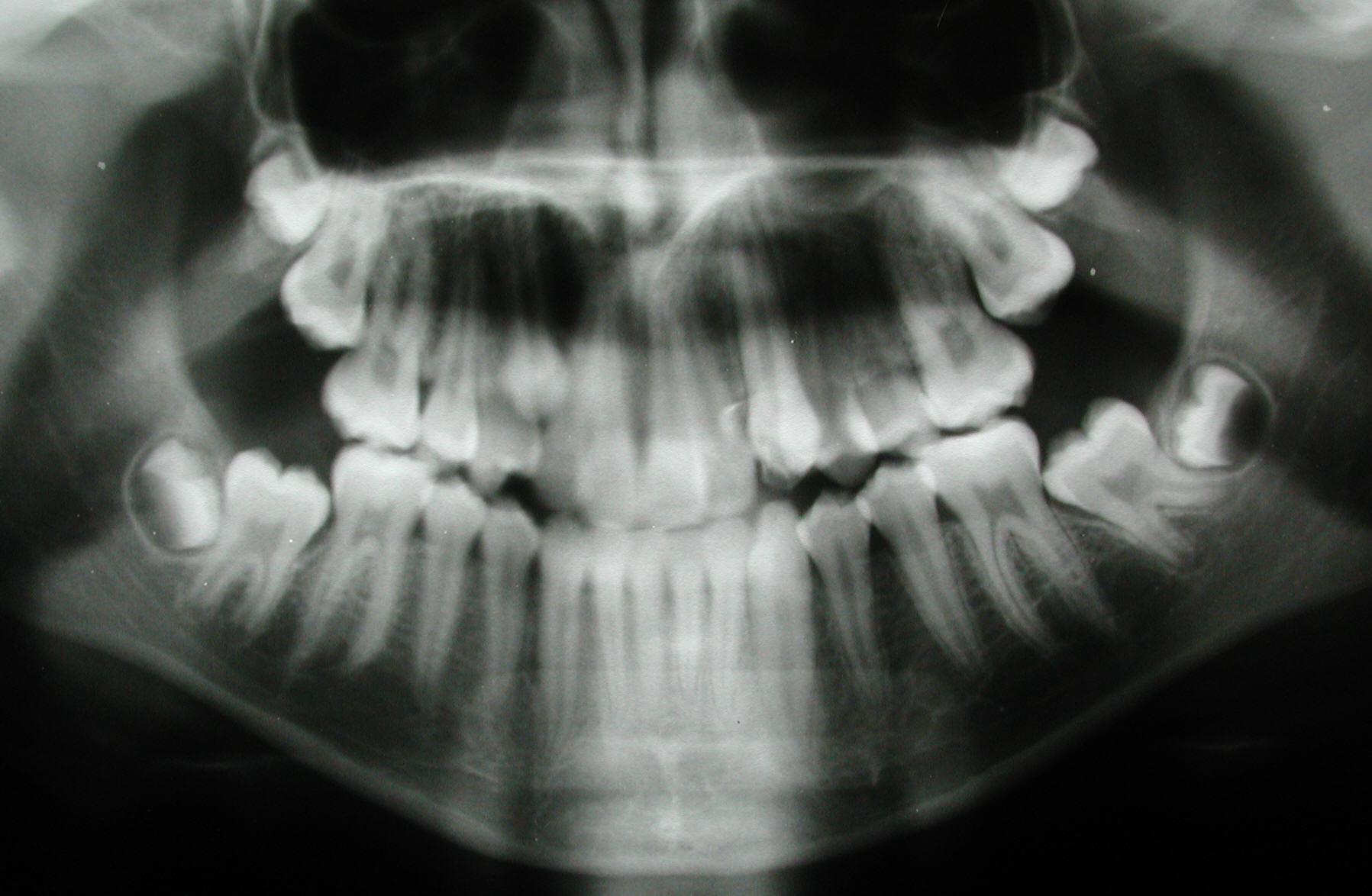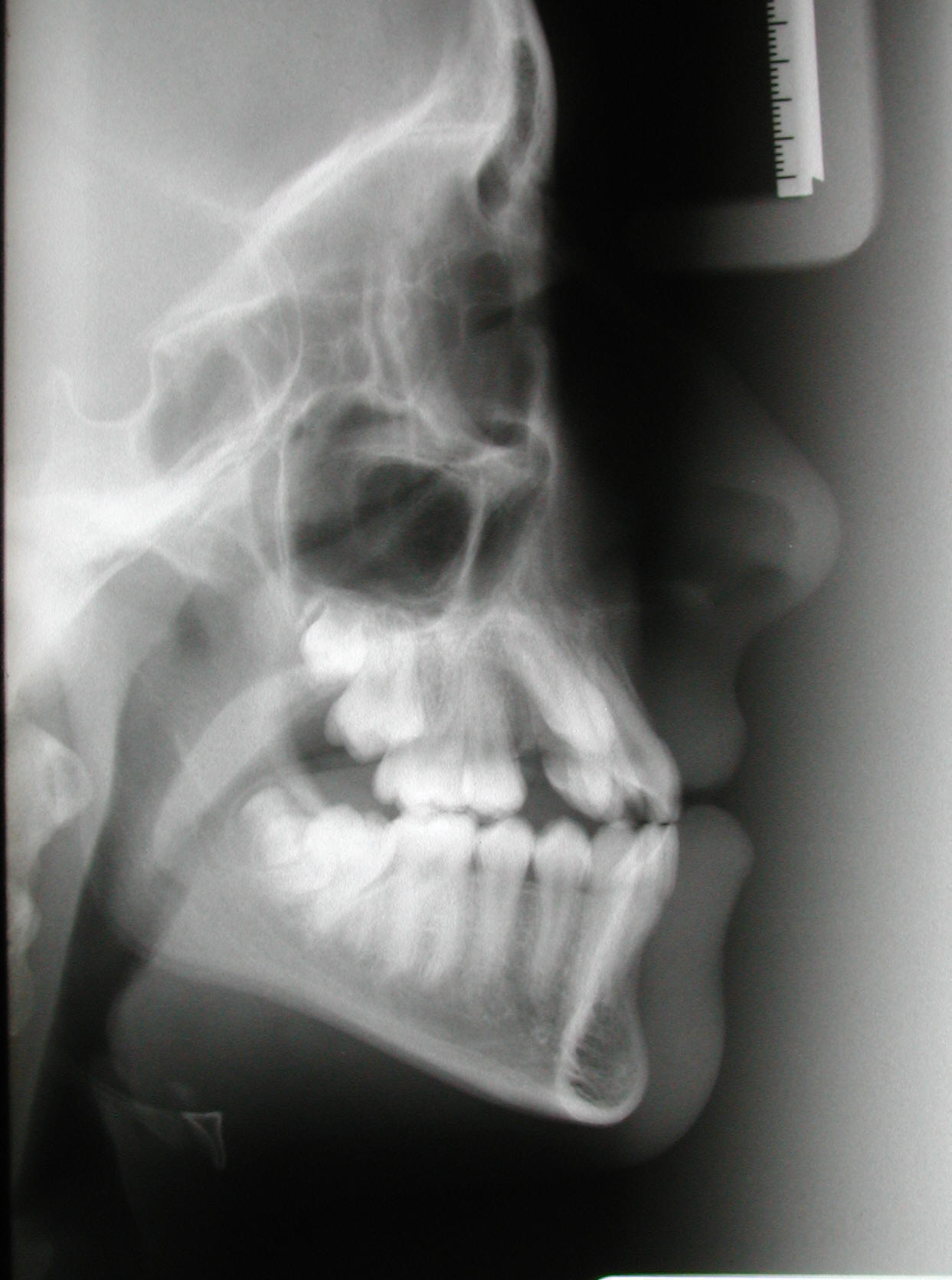Orthodontics is the use of braces or other devices to correct crooked teeth. It may involve changing the position of the teeth or modifying the way the jaws grow (dento-facial orthopaedics).
There is nothing to stop a dentist carrying out any treatment which they feel they are capable of, but only a qualified orthodontist, has taken the additional years of full-time study at a university, treating cases under experienced supervision to pass examinations and have their expertise recognised by their peers and the government. A specialist orthodontist does not normally carry out other dental treatment like fillings or extractions, so all their time is spent thinking and practicing orthodontics – practice makes perfect!

 Nothing – North Sydney Orthodontics is completely equipped to obtain all the information to diagnose and plan your orthodontic treatment. However if you have had x-rays that look like this in the previous year please obtain a copy and bring it to your appointment. If you want to be prepared download and complete our practice questionnaire here. Please complete the questionnaire and fax it back to 02 99545122, email it or just bring it..
Nothing – North Sydney Orthodontics is completely equipped to obtain all the information to diagnose and plan your orthodontic treatment. However if you have had x-rays that look like this in the previous year please obtain a copy and bring it to your appointment. If you want to be prepared download and complete our practice questionnaire here. Please complete the questionnaire and fax it back to 02 99545122, email it or just bring it..
1) A more attractive smile
2) Reduced appearance-consciousness during critical development years
3) Better function of the teeth
4) Possible increase in self-confidence
5) Improved ‘cleanability? Increased ability to clean the teeth
6) Improved force distribution and wear patterns of the teeth
7) Better long term health of teeth and gums
8) Guide permanent teeth into more favourable positions
9) Reduce the risk of injury to protruded front teeth
10) Aid in optimizing other dental treatment
1) Upper front teeth protrude excessively over the lower teeth
2) Upper front teeth cover the majority of the lower teeth when biting together (deep bite)
3) Upper front teeth are behind or inside the lower front teeth (underbite)
4) The upper and lower front teeth do not touch when biting together (open bite)
5) Crowded or overlapped teeth
6) The centre of the upper and lower teeth do not line up
7) Finger or thumb sucking habits which continue after six or seven years old
8) Difficulty chewing
9) Teeth wearing unevenly or excessively
10) The lower jaw shifts to one side or the other when biting together
11) Spaces between the teeth
Certain orthodontic problems can start quite early in life and The Australian Society of Orthodontists recommends a screening examination by the age of seven. Some jaw growth problems are easier to treat at this age. Early treatment may mean that a patient could avoid surgery and more serious complications later especially where the upper jaw is small. Such early treatment represents about 5% of our workload. For most other patients, once the second permanent molars have erupted around the age of 12, it is possible to do a definitive alignment of the teeth, which usually takes around 18-24 months of treatment, and this has been shown to be the most efficient age to carry out treatment for the majority of patients.
Orthodontic treatment is possible at any age, so if you are already fully grown don’t despair, because adults make great patients too. The oldest patient Dr Daniels has treated so far was 69 years when the braces went on! Adult treatment can have certain challenges not usually present in children.
Phase 1, or early interceptive treatment, is limited orthodontic treatment (i.e. expander or partial braces) before all of the permanent teeth have erupted. Such treatment can occur between the ages of seven and ten. This treatment is sometimes recommended to make more space for developing teeth, correction of crossbites, overbites, underbites, or harmful oral habits.
Phase 2 treatment is also called definitive treatment, because it involves full braces when all of the permanent teeth have erupted, and should establish the adult smile.
Tooth movement is a natural event in healthy teeth, and tooth movement can occur throughout life. Teeth arrive in their natural positions by forces from the tooth roots, the jaw- bones, muscles of the lips, tongue and cheeks, and biting forces. Occasionally prolonged external forces such as finger sucking can change the natural position of the teeth. A healthy tooth stops moving when all the forces on it are balanced. Orthodontics works by directing a force to the teeth either through the springiness of an arch- wire, elastics or the pressure arising from the fit of removable appliances such as invisalign. The teeth move in the direction that the force is directed. When the braces come off, natural muscular forces once again are the predominant force acting on the teeth and that is why the retainers are so important.
Treatment time (excluding retainers) is usually from 12 to 30 months. Actual treatment time can be affected by your age and the severity of the problem. Treatment length is also influenced by patient cooperation. Looking after your braces and keeping regular appointments are important to keep treatment on schedule. Two phase and early intervention treatments usually result in longer overall treatment times.
It is normal to experience some slight discomfort after placing orthodontic appliances and whenever they are activated (at your adjustment appointments). Any discomfort is usually mild and is controllable with non- prescription pain killing tablets. The lips and cheeks may need one to two weeks to get used to the braces on your teeth.
It depends: We always prefer to treat without extractions if possible, but, extraction therapy is a necessary part of some orthodontic plans because some people’s teeth are simply too big for the size of their jaws. Unfortunately misleading TV and newspaper articles sometimes confuse the public by claiming orthodontic extractions ruin facial profiles and damage the jaw joints, despite the fact that there is plenty of good research to the contrary. We carefully analyze each and every patient and discuss their concerns to produce individually tailored plans to produce the right result every time.
We don’t expect you to run or swim any faster with your braces on but don’t let that stop you trying! Its OK to continue sports but please wear a proper mouth-guard. Removable braces should be removed for contact sports and swimming, and kept safe in an appropriate protective box.
No. However, there may be an initial period of adjustment. In addition, brace covers can be provided to prevent discomfort.We have successfully treated trumpeters, flautists, and clarinetists!
Yes, you should continue to see your general dentist every six months for cleaning and dental checkups.
The orthodontist plans the tooth movements to be as stable as possible, however the nature of tooth stability is incompletely understood. Teeth can drift out of position again, due to ‘elastic recoil’ of the gums, continuing facial growth or unbalanced natural forces from the facial muscles. Retainers are used to keep your smile as fantastic as the day your braces come off Click here to learn more about retainers.
Many people have observed that at the end of the teenage the lower front teeth go a little crooked even if the orthodontic treatment had obtained a good alignment, and sometimes even when a straight set of front teeth had grown naturally and no orthodontics was carried out. This happens at about the same time that third molar teeth typically grow in the mouth – so the two events became associated. Some orthodontists started to recommend taking out wisdom teeth to prevent further movement of the lower incisors. However careful experimentation and long term follow up has proved this is incorrect – because if the wisdom teeth are surgically removed around age 12, or if they are missing from birth , there is still a measurable shift in the incisor positions in the late teenage. In fact very long term studies show that our teeth move throughout life. The only proven way to guarantee the lower incisors will remain straight is to continue some form of retention.
Despite many requests for a ‘quote over the phone’ it is not possible to estimate the true cost of treatment without seeing the patient first. If you are ready to start and know what you want you may be eligible for our a free consultation which is a ‘business like’ 10 minute meeting where we will advise you on your request amd give you an accurate outline of treatment costs. A free consultation is most appropriate if you are obtaining a second “quote”before starting treatment. However for most patients a full (paid)consultation is more appropriate to allow enough time to properly discuss options and answer any questions you may have- afterall orthodontic treatment is a complex and expensive process and its worth getting the right level of advice for procedures which may affect your teeth and smile for the rest of your life.
